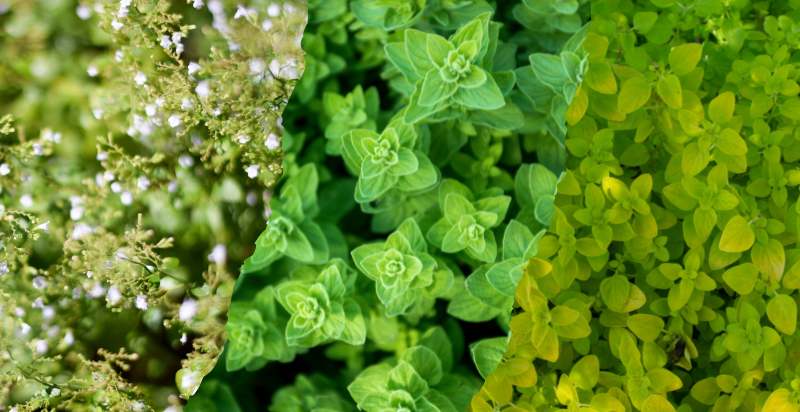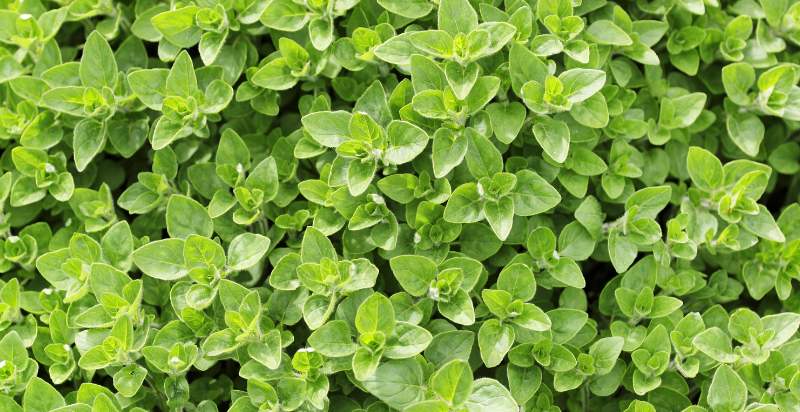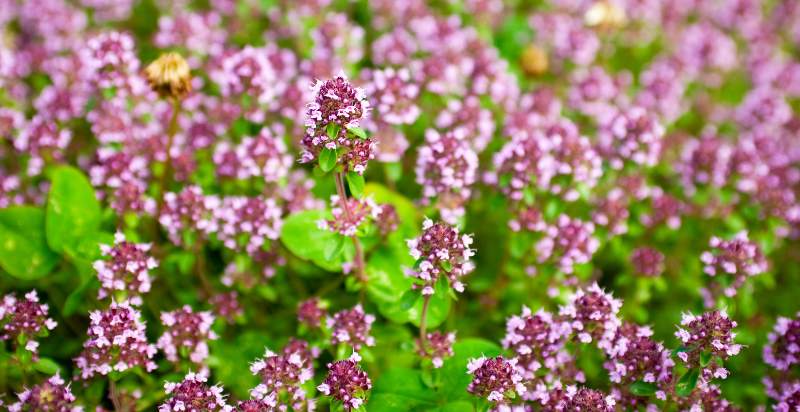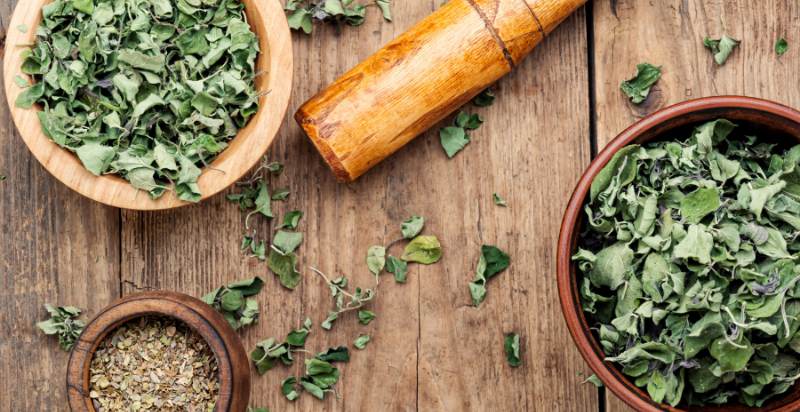Marjoram is an aromatic herb native to the Mediterranean and southwest Asia. It has long been used for culinary, medicinal, and spiritual purposes. Marjoram can be grown either indoors or outdoors in a sunny location with well-draining soil. This article will cover how to plant marjoram from seed, growing conditions, and harvesting tips.
Marjoram is a fragrant herb in the mint family, native to the Mediterranean region. It has long been used as an ingredient in traditional dishes and for its medicinal properties. The most commonly used part of the plant is its leaves, which are dried and ground or sold whole. Marjoram is a key flavor component of many Middle Eastern dishes, such as tabbouleh and kebab.
What is Marjoram?
Marjoram is an aromatic herb native to the Mediterranean, which gives a warm and pleasant aroma when used in cooking. It has attractive, hairy leaves and small white, pink, or purple flowers that bloom in late summer. Marjoram can be found fresh or dried in almost any grocery store. The flavor of marjoram is slightly sweet and mild compared to oregano, yet it’s still savory and spicy.
History of Marjoram?
Marjoram has been used for centuries in different cultures all over the world. In ancient Greece, the marjoram was considered a symbol of happiness and was often used as an offering to the gods. The ancient Romans associated marjoram with love and fertility, planting it around their homes for protection and good luck. Herbalists have also used marjoram throughout history to treat digestive issues, coughs, colds, headaches, and insomnia.
Types of Marjoram:
There are three main types of marjoram: sweet marjoram, Syrian marjoram, and wild or pot marjoram. Sweet marjoram is the most popular variety and has a milder flavor than other types. It is usually used in cooking as it pairs well with meats, vegetables, salads, soups, and sauces. Syrian marjoram is known for its pungent aroma and stronger flavor, making it ideal for pickling recipes. Finally, wild or pot marjoram has a more intense taste but less sweetness than the other two varieties. Its strong aroma makes it perfect for adding depth to sauces or dressings.

Uses of Marjoram:
Marjoram can be used dried or fresh in cooking and baking recipes. The leaves of the plant are more fragrant than the stem, which makes them ideal for adding flavor to sauces, salads, and soups. Dried marjoram is also often used as a spice rub for meats or as a seasoning when grilling vegetables.
In traditional medicine, Marjoram has been used to treat digestive issues such as stomach aches and indigestion. It is also believed to help reduce inflammation and ease the symptoms of colds and flu.
As an aromatherapy oil, Marjoram is known for its calming scent. When inhaled, it improves relaxation and reduces stress and anxiety. The oil can also be used in massage oils or added to baths for a soothing effect.
Nutritional Benefits of Marjoram:
Marjoram is a good source of vitamins A, C, E, and K and several minerals, including calcium, iron, magnesium, and zinc. It also contains carvacrol and thymol, beneficial compounds with antibiotic properties.
When consumed as part of your diet, Marjoram boosts the immune system, aid digestion, and promotes healthy skin. As it is low in calories, it is also a great addition to any weight loss plan.
Overall, Marjoram is a flavorful and nutrient-dense herb that can be included in many recipes or used for therapeutic purposes. It provides various health benefits and adds a wonderful depth of flavor to foods. Try adding Marjoram to your cooking today!
Marjoram is an incredibly versatile herb that can be used both fresh or dried as part of many recipes. From traditional medicine to aromatherapy, this powerful plant has been used for centuries and offers a range of health benefits, including immune system support.
How to Plant Marjoram?
Marjoram is an aromatic herb that has long been used for cooking and medicinal purposes. Its fragrant, warm, and minty flavor makes it a great addition to many dishes. Planting marjoram can be easy if you keep a few tips in mind. Here we will discuss the basics of how to plant marjoram and get your garden off to a good start!
Choose the Right Location
When selecting where to grow your marjoram, choose an area with plenty of sunlight during the day (at least 6-8 hours). To thrive, marjoram plants need plenty of sunshine, so avoid shady locations or areas with strong wind. Also, try not to plant marjoram near other plants susceptible to diseases, as marjoram is a favorite target of many plant pests.
Choose Your Planting Material
When it comes to planting marjoram, you have several options. You can purchase and use pre-grown seedlings or start your own from seeds. If you choose the seedling route, make sure they look healthy and strong before purchasing. Starting from seeds allows you more control over the type of marjoram you want to grow, but it also requires more patience since it will take longer for them to mature.
Prepare soil
Once you’ve chosen your location and planting material, it’s time to prepare the soil. Marjoram prefers well-draining, nutrient-rich soil, so mix compost or peat moss into your garden bed before planting. You can also add a slow-release fertilizer to ensure adequate nutrition for your plants throughout their growth cycle.
Plant and Water
Now it’s time to get your hands dirty! Planting marjoram is easy – dig small holes in the prepared soil and place one seedling or two seeds per hole. Make sure that there is enough space between plants (about 8-12 inches) so they have room to grow without overcrowding each other. Once planted, lightly water the area with a mist on the hose or watering can.
Maintenance
Once your marjoram plants are established, there isn’t much to do for maintenance besides keeping an eye out for pests and diseases. Water marjoram regularly (1-2 times a week) but don’t overwater, as this can lead to root rot. As the plants grow, prune them back occasionally to encourage bushy growth and keep them looking neat.
Harvesting
You can begin harvesting marjoram when the plants have at least four sets of leaves on each stem. Snip off small pieces and enjoy the fresh flavors in your meals! Make sure to leave some stems intact so that they can continue to produce new growth.
With these tips, you’re sure to have success when planting marjoram! So get out there and get planting – your marjoram plants will thank you for it!
How to Care for Marjoram Plants?
Once your marjoram plants are established, you can do a few simple things to ensure their ongoing health and vigor. Here’s what you need to know about caring for marjoram plants:
- Watering: Marjoram likes moist soil, so keep it evenly watered throughout the growing season (1-2 times per week). Avoid overwatering though, as this can lead to root rot.
- Fertilizing: Apply an all-purpose fertilizer every 4-6 weeks during the growing season. This will help replenish nutrients in the soil and promote healthy growth.
- Pruning: Prune back stems periodically to encourage bushier growth and remove any dead or damaged stems.
- Harvesting: Harvest marjoram leaves when the plants have at least four sets of leaves on each stem. Snip off small pieces and enjoy the fresh flavors in your meals! Make sure to leave some stems intact so that they can continue to produce new growth.
With these tips, caring for your marjoram plants should be easy! With a little attention, you’ll have bushy plants full of flavorful herbs in no time. Enjoy!

Preventions from Pests and Diseases:
Keeping marjoram healthy and happy requires some effort. One of the most important steps you can take is to prevent pests and diseases from attacking your plants. Here are some tips for preventing common issues:
- Plant marjoram away from other susceptible plants – Marjoram is a favorite target of many plant pests, so keep it away from other vulnerable species.
- Practice crop rotation – Plant different herbs and vegetables in the same garden bed each year to avoid the buildup of soil-borne pathogens that could affect your crops.
- Keep weeds at bay – Remove weeds regularly to reduce competition for resources like water and nutrients and reduce the risk of weeds harboring plant pests or diseases.
- Check plants regularly – Inspect your marjoram leaves and stems for signs of disease or pest activity, such as discoloration, wilting, gnaw marks or bugs. If you notice any issues, take action immediately to prevent the spread of infection.
By following these tips and keeping an eye out for common problems, you can help ensure that your marjoram plants stay healthy and productive!

How to Harvest Marjoram?
Harvesting marjoram is simple – snip off some of the stems with at least four sets of leaves on them. This can be done anytime during the growing season, but for best results, ensure the harvest before the plant’s flowers. To preserve the flavor and aroma, it’s best to use fresh marjoram in recipes or dry it for later use.
So now you know how to care for marjoram plants and how to harvest them – get out there and start enjoying your homegrown herbs! Bon appétit!
Storage:
Once harvested, you’ll need to store your marjoram properly to stay fresh. Here’s how to do it:
- For short-term storage, keep your marjoram in an airtight container or zip-top bag and store it in the refrigerator. This will help preserve its flavor and aroma for up to a week.
- For longer-term storage, you can also dry or freeze your marjoram. To dry it, tie stems together into bundles and hang them upside down in a cool, dark place until the leaves are brittle. Then crumble them and store them in an airtight jar away from light. To freeze it, spread the leaves on baking sheets and flash freeze before transferring them to freezer bags or containers.
With these tips, you can ensure that your marjoram stays fresh and flavorful for as long as possible!

Risks of Overwatering:
As with any plant, overwatering can have serious consequences for your marjoram. Too much water can cause the roots to rot, leading to wilting and stunted growth. It can also encourage fungal diseases like powdery mildew or root rot. To avoid this, check the soil before watering – if it’s still moist from a previous watering, then hold off until it’s dried out. You should also ensure that your plants are planted in well-draining soil so excess water can drain away quickly.
By following these tips you can ensure that your marjoram plants stay healthy and productive! With care, attention, and the right balance of water and nutrients, you’ll have bushy plants full of flavorful herbs in no time. Enjoy!
Additional Tips:
- Plant marjoram in a sunny spot – Marjoram prefers full sun or partial shade, so be sure to find a spot that gets plenty of direct sunlight.
- Amend the soil with compost – Adding organic matter like compost can help improve soil drainage and provide your plants with essential nutrients.
- Fertilize lightly – Marjoram doesn’t need much fertilizer, so it’s best to use a light hand when feeding your plants. A balanced all-purpose fertilizer is usually sufficient.
- Mulch around your plants – A layer of mulch, such as straw or wood chips, can help reduce weeds, conserve moisture, and keep soil temperatures steady.
- Fight fungal diseases with fungicides – If you notice signs of fungal disease, a fungicide can be used to treat the affected areas. Always follow product instructions carefully!
By following these tips, you’ll be able to get the most out of your marjoram plants and enjoy delicious homegrown herbs all season long!
Happy growing up!
Conclusion
Marjoram is an easy-to-grow, flavorful herb that adds a delicious twist to any dish – and with the right care and attention, you can enjoy your homegrown marjoram in no time! With proper planting, watering, fertilizing techniques, and tips for harvesting and storage, you’ll be able to get the most out of your plants. Happy growing up!
Happy gardening!
- Water Berries: Description, Flavor, Benefits, And Uses - June 18, 2024
- Everything You Wanted To Know About Sweetheart Cherries - June 17, 2024
- Indian Jujube: Description, Flavor, Benefits, And Uses - April 30, 2024

23 thoughts on “How to Plant, Grow, and Care for Marjoram Herbs”
Comments are closed.